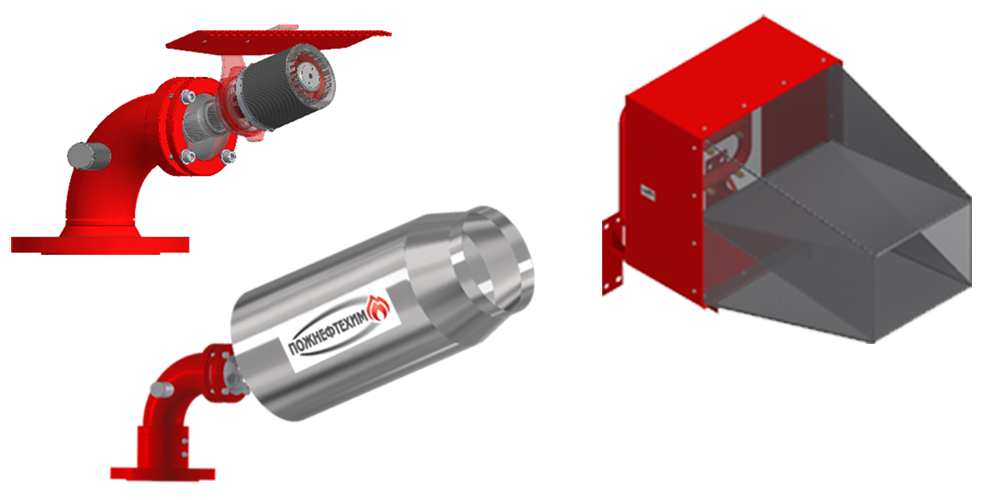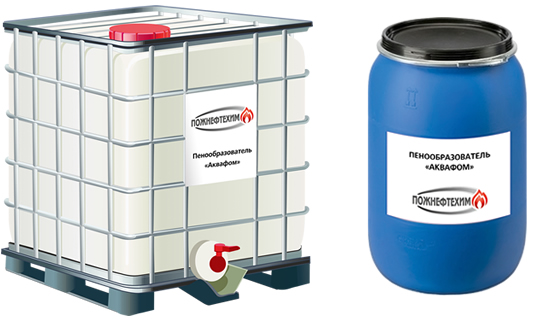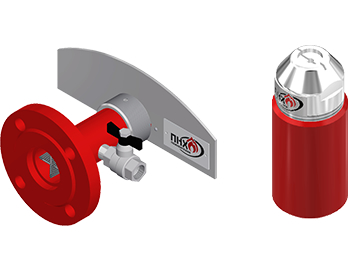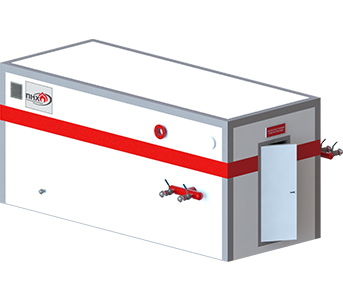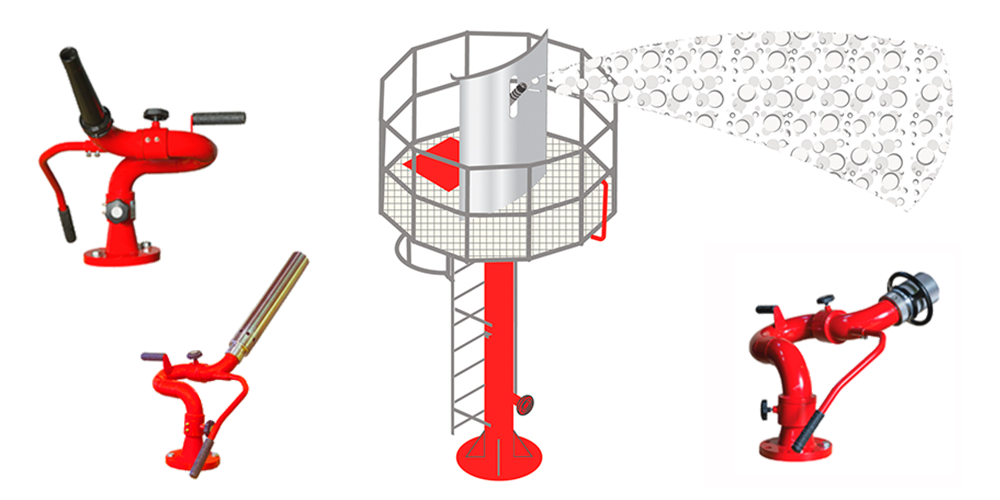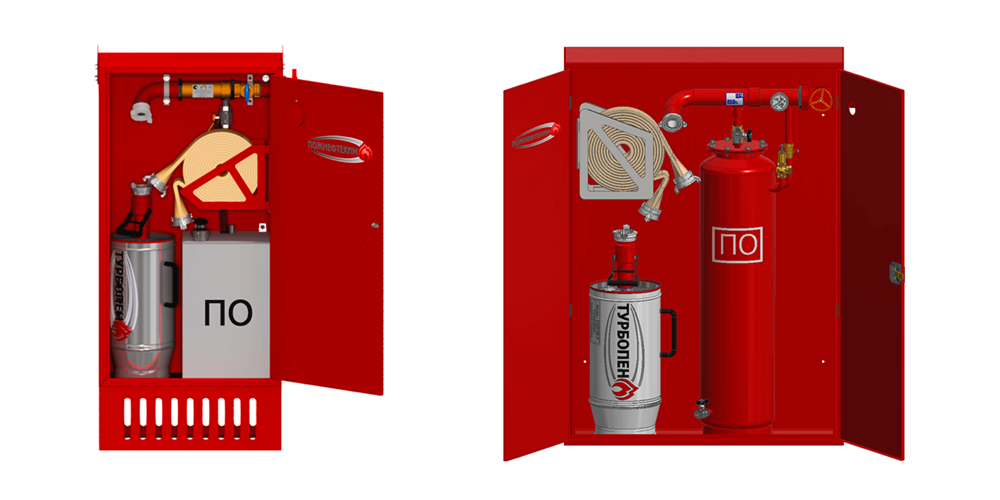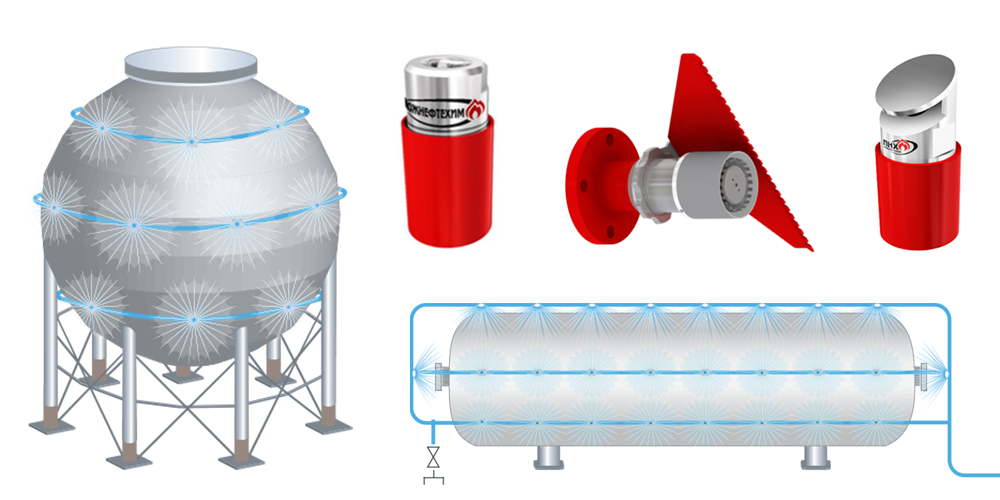ECOLOGICAL ASPECTS OF USE OF AQUAFOM FOAM CONCENTRATES
- AFFF
- AFFF/AR
- S/AR
- S
- WA
- Пенный состав для
изоляции аммиака - Пенный состав для
зарядов модулей
и огнетушителей
The basis of all foam concentrates and wetting agents is surfactants. They change the properties of the solution, surface and interfacial tension, increase the spreadability of the solution, its wetting ability. They are “responsible” for the formation and, in part, for the stability of the foam.
For the manufacture of Type S foam concentrates only hydrocarbon surfactants are used. Having a polluting effect on the environment, they are nonetheless capable of almost complete biodegradation.
In 1963, a “light water”, a new class of film-forming fluorine-containing foam concentrates was patented. They literally revolutionized many industries, including firefighting. A fundamentally new method of extinguishing appeared, which is the extinguishing with low-expansion foam. The effectiveness of the new method, especially for flammable and combustible liquids, contributed to its rapid spread. In the ‘90s, the new method became widespread in enterprises of Russia and countries of the former USSR.
However, restrictions on the use of perfluorinated surfactants soon became apparent. The toxic and carcinogenic properties of perfluorooctanesulfonates and their derivatives were found. Tests on rats showed that they are distributed mainly in serum and liver and do not participate in subsequent metabolism. The embryotoxic effect of the compounds, the violation of vital functions due to ingestion, were proved. They are extremely slow when removed from the human body - from 2 years to 21 years. These compounds have great stability in the environment, their half-life in the aquatic environment (hydrolysis) is 41 years, and these compounds are not at all subject to destruction by light (photolysis). Perfluorooctanesulfonates and their derivatives were classified as persistent organic pollutants.
In 2001, the Stockholm Convention was adopted, aimed at reducing environmental pollution and protecting human health. In 2009, the list of persistent organic pollutants covered by the Convention was expanded. Perfluorooctanesulfonic (PFOS) acid and its derivatives were also enlisted. Major global manufacturers of fluorinated chemicals agreed to a phase-out program for PFOS and its derivatives, as well as substances that form PFOS, by 2015. The main producers of fluorine surfactants improved the toxicological and environmental characteristics of the products by blocking the sulfonate group, reducing the number of carbon atoms in the perfluorinated radical from C8 to C4-C6, using not complete but partial fluorination.
In 2011, Russia joined the Stockholm Convention 2002 version. In 2014, a government decree was adopted on measures to ensure compliance by the Russian Federation with the obligations stipulated by the Stockholm Convention on Persistent Organic Pollutants.
Pozhneftehim Group follows the global trend to reduce environmental pollution and pays great attention to the environmental safety of products. Guaranteed quality components that meet international standards and do not contain substances prohibited by the Stockholm Convention on Persistent Organic Pollutants are used as raw materials for the production of foam concentrates such as AFFF and AFFF/AR type. Compliance with this requirement is guaranteed by manufacturers of surfactants in letters of guarantee declaring product quality. All foam concentrates are biodegradable.
Much efforts are being applied to reduce the content of hazardous substances in the composition of foam concentrates and increase the biodegradability of all Aquafom brands. In 2014, the S/AR type, new for Russian manufacturers of foam concentrates, was created – the synthetic alcohol-resistant Aquafom-S/AR foam concentrate of the intended purpose for extinguishing polar and non-polar combustible liquids. While maintaining high extinguishing efficiency, confirmed by tests at the VNIIPO EMERCOM of the Russian Federation with the issuance of the approved “Recommendations for the use of the Aquafom-S/AR foam concentrate”, it is characterized by low phytotoxicity and the ability to 100% biodegradability. Environmental tests conducted at the “Test Center for Surfactants, Detergents, and Paint and Varnish Materials” (Shchebekino) showed that sludge adaptation takes only a week. New portions of the foam concentrate per day decompose by about 90%, and the formation of foam is no longer observed. In terms of phytotoxicity, the threshold concentration of Aquafom-S/AR is 25 times higher, and the dilution factor of the premix is 10,000 times lower than that of the AFFF type of foam concentrate. Since the developed foam concentrate contains only mild surfactants, the maximum permissible concentration of surfactants for discharge into industrial wastewater is 50 mg/l. This corresponds to a dilution of the Aquafom-S/AR concentrate in a ratio of 1:2500. Foam concentrates of AFFF/AR type of 6% concentration must be diluted approximately 12,000 times or disposed of in special furnaces in chemical plants.


